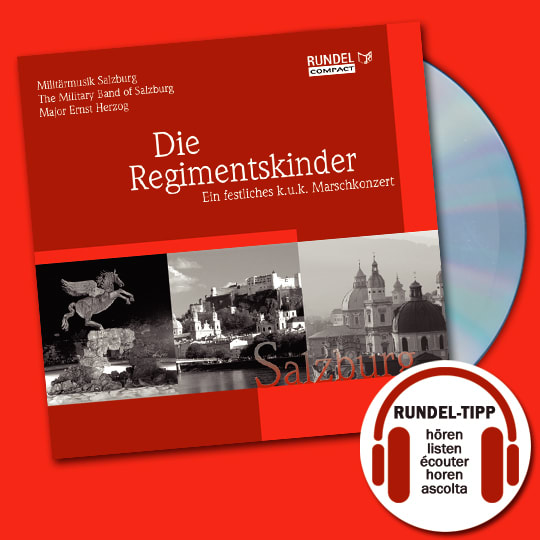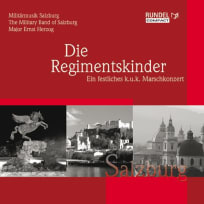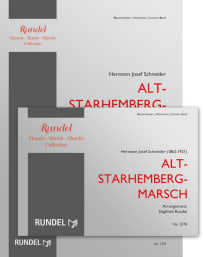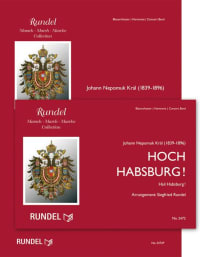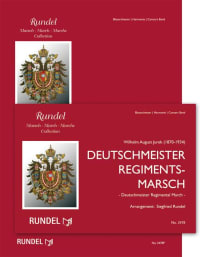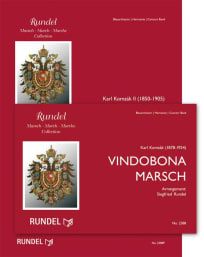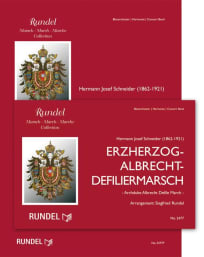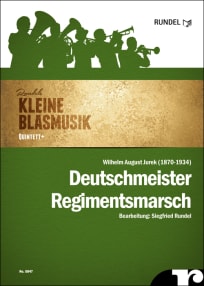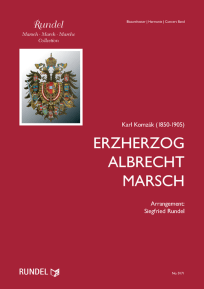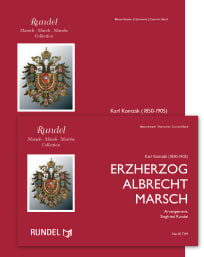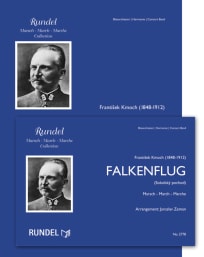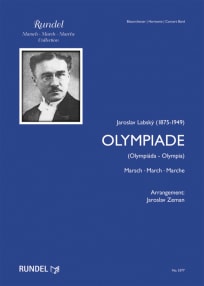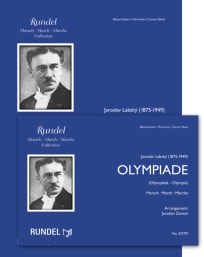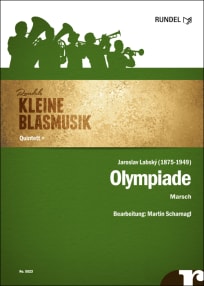Concert Band
Erzherzog-Carl-Marsch
Archduke Carl March
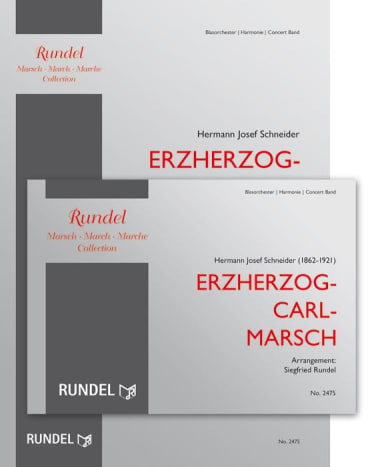
Concert Band
Erzherzog-Carl-Marsch
Archduke Carl March
Composer
Arranger
Genre
Occasion
Performance time
00:03:24
Grade Level
Mittelstufe
Publisher
Rundel
Size
March / Card Size
Info
Full Score + Condensed Score + Parts
Order Number
MVSR2475
Release Date
2003
Listen
Read
Listen & Read
Wishlist
Print
Share
Info
Hermann Josef Schneider never had been a military bandmaster. Consequently he is one of the few civilian conductors of his time who secured for themselves one of the coveted positions in the Austro-Hungarian “band heaven”. Schneider spent most of his life in native Bohemia. He was musically educated in the district capital Zatec – he was born in neighboring Teplá - and later at the music-school of the Ambrosius Association in Vienna. In 1881 he was drafted to comply with his national service and spent the mandatory tour of duty with Infantry Regiment (IR) 62 in the Transylvanian city of Maros-Vásárhely, which today is Tirgu Mures in Romania. In 1884 he left the army as a non-commissioned officer (brevet rank). Upon his return to Zatec in the same year, he was appointed choir director at the city parish church and also took over the baton of the band the Uniformed Citizens’ Militia in his capacity of city music director. Hermann Josef Schneider basically never left Zatec again, and it was here that he developed his musical activities to the full. More than 500 works encompassing marches, dances, tone poems, various potpourris, sacred music, as well as two operettas testify to the fact that he was a prolific composer. Most of his music was published by his own. The year of composition of his most famous marches, which were also published by his own firm, is not known. They are generally considered to be true gems of the Austrian art of the march. The original title of the “Archduke Carl March”, op. 562 was “Archduke Carl Franz Josef Review March” and was probably dedicated to the Archduke-Heir-to-the-Throne (as of October 1914) in his capacity of Inhaber of IR 19. Schneider’s thrilling “Old Starhemberg” is reminiscent of the heroic defense of Vienna under the command of Ernst Rüdiger Count Starhemberg during the siege of Vienna by the Ottoman Grand Vizier Kara Mustapha in 1683. It is generally regarded as the “true” regimental march of IR 54 in spite of the fact that a march of the same name by J.N. Fuchs was assigned to this regiment as official march.

